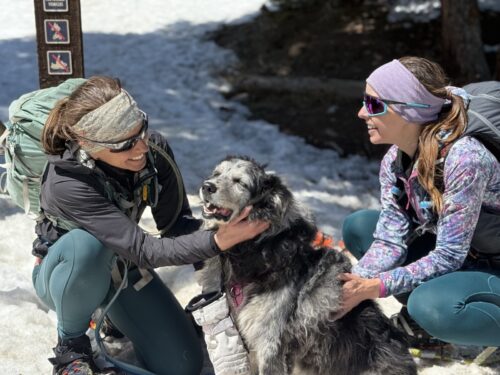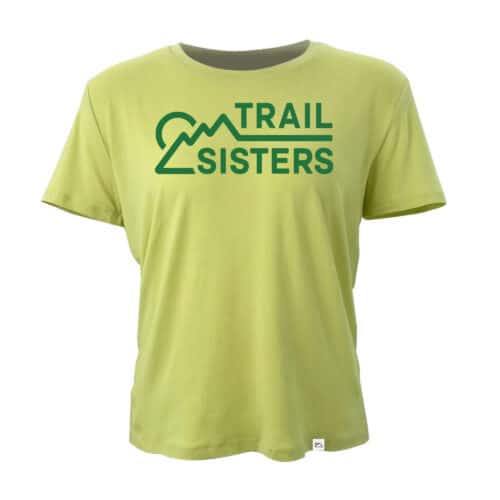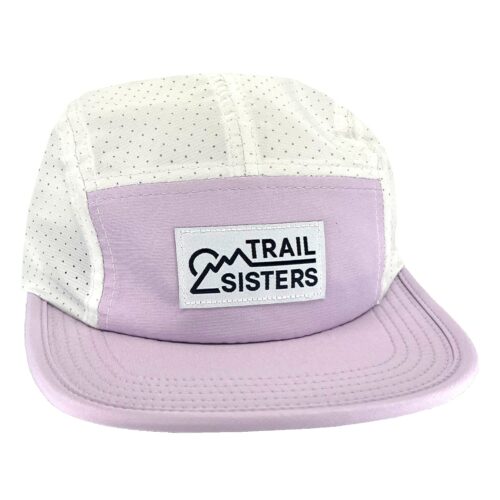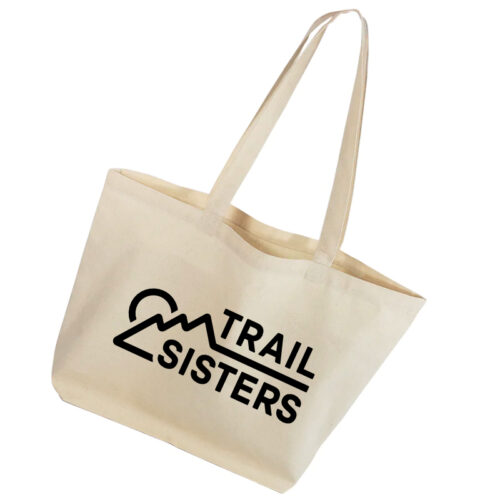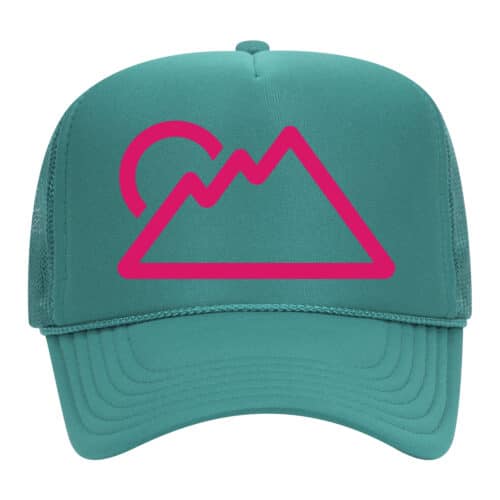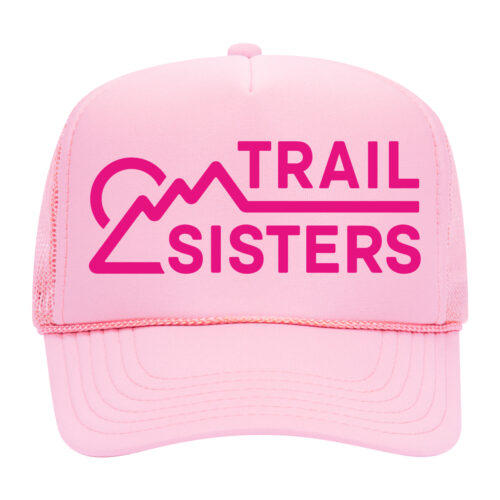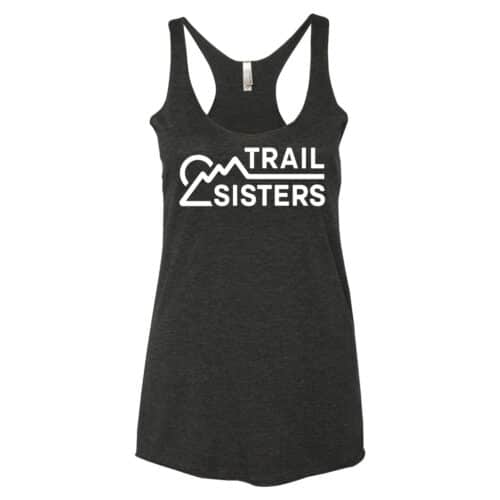Main Menu
Navigating Aid Stations With Food Aversions

Kuwanna has a PhD in geology and is a UESCA-certified Ultra Run Coach. She is married with two daughters and feels that running all the miles is a great panacea for helping navigate those teenage years. Kuwanna has a love for tough, vertical trail marathons and ultras, with several Beast Coast races under her belt, including Virgil Crest, Cayuga Trails, Hyner View Trail Challenge, and Breakneck Point Trail Runs. Having now completed several 50Ks, 50-milers, and a 100K, she’s eyeing her first 100-miler. When Kuwanna’s not running on the trails, she’s writing about it. She is co-editor/writer at the Trails Collective and has created content for the Patagonia Trail Running IG. She also serves on the Finger Lakes Runner’s Club Communications Team. Instagram handle is @dyerpietras.
Share This Article!
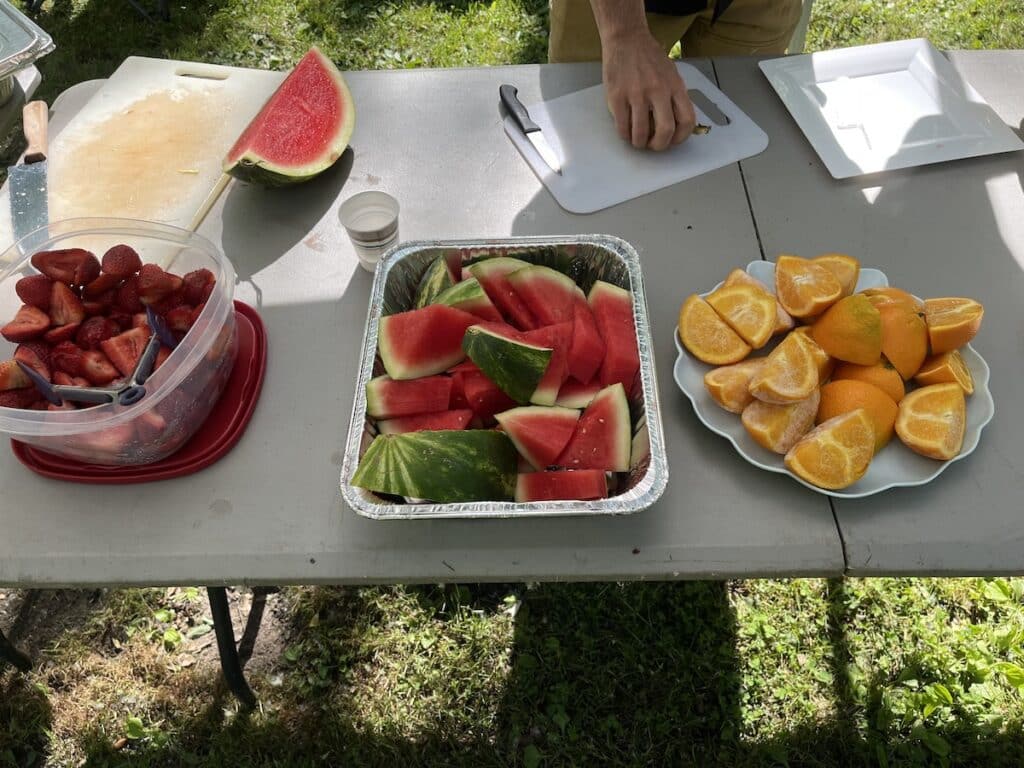
Racing season is well underway, and for many of us, that means running all the miles on a weekend afternoon while passing multiple aid stations along the way. And for all runners, dialing in race day nutrition is a key factor for success. But a few of us will have to make even tougher decisions about nutrition, balancing how much we carry in with what we might expect to find at aid stations, as we minimize our risk of exposure to foods that could make us sick. For runners with certain autoimmune conditions, food allergies, or aversions, the risk of derailing ourselves in a race by eating something that makes us unwell is very real.
Helping fellow runners with certain autoimmune conditions, food allergies, or aversions safely navigate aid stations in races has always been the mission. And I believe this topic is relevant to many athletes.
While the article focuses primarily on gluten, I address other common food allergens. I also share a little of my own history. I explain the difference between “gluten-free” and “certified gluten-free,” and I formally define allergies, sensitivities, and autoimmune disorders. The article then provides recommendations for foods at aid stations based on aversion and closes with the stories of a few pro runners with Celiac Disease and how they fuel when they compete.
Part 1: My History
I have been gluten-free since 2018, though looking back, I believe my inability to tolerate gluten began not long after the birth of my second child. I knew it would take months for my post-partum belly to lessen after giving birth, but after a year following this second birth, I found that it had not. In fact, I still looked pregnant most days. My belly was so distended, I hid it underneath a girdle most days.
By the summer of 2018, when I was at my worst, I was recovering from an unexpected pelvic fracture, likely the result of my previously undiagnosed osteopenia (another symptom of Celiac Disease). I had paused my running while I recovered and spent the summer working on a farm. I recall having to time my bathroom visits when I left the house, as it was a 45-minute drive there. I used the bathroom (1) before I left, (2) once I got there, (3) before lunch, (4) after lunch, (5) before I left for home, (6) after I returned home. After a couple of months of this, I was ready to see a doctor, but first tried an elimination diet. Once I reached gluten on the list and eliminated it, within days my symptoms went away.
Goodbye craft beer and artisan bread.
So, for four years I followed a dedicated “gluten free” diet and unless it was a fresh fruit, fresh vegetable, or unseasoned meat, it had to be labeled “gluten-free,” or I wouldn’t eat it. And that belly distension was gone…seemingly overnight. For once, I did not look pregnant. I was elated and even thought about burning my girdles.
However, in January 2022, I began to struggle with intense fatigue and amenorrhea, the latter which I had not yet experienced before. I initially attributed this to overtraining and so I backed off my training significantly, and within days my period returned. But a month later I was still exhausted all the time. I found it increasingly difficult to get out of bed in the morning, and as a morning person this confused me (and puzzled my husband, as he found himself on his own getting the kids ready for school each day). There were also other strange symptoms, such as intense insomnia from alcohol: if I had alcohol with dinner, I would abruptly wake up in the middle of the night, my heart racing, and then lie awake for several hours. The fatigue was relentless, and that familiar glutened feeling of wanting to stop mid-run to lie down in the road had returned with a vengeance. I was also feeling a tremendous brain fog, unable to think straight, and I was painfully unmotivated to do anything but sleep and started dreading the fatigued runs. And I was terribly depressed.

I decided to explore Celiac Disease further, though I had tested negative twice (note: test before eliminating gluten) and began to recognize many Celiac symptoms in me: fatigue, insomnia, brain fog, lack of motivation, intense GI distress, and osteopenia/osteoporosis (recall the pelvic fracture). And as I continued to read, I wanted to better understand the difference between foods labeled “gluten free” and those labeled “certified gluten free.” So, starting on a Friday, I switched all packaged foods to those labeled “certified gluten free.” And within days, the fatigue and depression lifted, the brain fog began to dissipate, and my energy levels ultimately rebounded to a point that felt greater than before this second onset. I now know they call this “gluten-fog” and “gluten-depression.” I never imagined there could be such a thing, how a food substance (other than alcohol) could affect my brain this way.
Part 2: Gluten-Free vs. Certified Gluten-Free
For a food to be certified gluten-free, it must be confirmed by one of three outside companies to contain <20 ppm gluten. It should be noted, however, that 20 ppm is still much too high for those with Celiac Disease and too high for allergies. Of those three, the Gluten-Free Certification Organization (GFCO) only certifies foods containing <10 ppm gluten. Foods that are labeled gluten-free without third-party certification are supposed to be tested in-house, with test results showing <20 ppm gluten. However, some food brands on the market do not formally test their products, and simply base their labeling on the ingredients contained in the product. What’s more, others label foods gluten free, perhaps forgetting that some ingredients, such as malt, contain gluten. This becomes problematic because companies may not know the handling process of individual product ingredients before they arrive at their facility. And as was explained to me recently by a friend at Tailwind Nutrition, it also depends on what day the product is tested in-house. One batch of “gluten-free” cereal, for example, may contain 12 ppm gluten and not cause a flareup. But another batch bought a month layer may contain 18 ppm gluten and leave the consumer reacting to a food that is states it is “gluten-free.”
Oats are naturally gluten-free but are often grown in fields adjacent to wheat and processed on the same equipment. Purity protocol oats are grown in a dedicated field and processed in a dedicated facility. “Gluten-free” oats that are not purity protocol undergo a sorting process and are then deemed “safe.” Not surprisingly, sorting is an imperfect process. However, even purity protocol oats are commonly found to be cross-contaminated with gluten, to the extent that the Gluten Free Watchdog recently issued a statement, following extensive testing and reporting, in which they now state that they are no longer able to recommend any brand of gluten-free oats for safe consumption by individuals who must avoid gluten.
Part 3: Defining the Different Aversions
- Wheat Allergy results when the body produces antibodies to proteins found in wheat (albumin, globulin, gliadin and gluten), in response to exposure. It may result in anaphylaxis and can be life threatening. (Mayo Clinic)
- Celiac Disease is an immune response triggered in the small intestine in response to consuming gluten, a protein found in wheat, barley, and rye. (Mayo Clinic)
- Non-Celiac Gluten/Wheat Sensitivity may result in symptoms like those of Celiac Disease. (Celiac Disease Foundation) This diagnosis is assigned to individuals who exhibit symptoms of Celiac Disease, but who test negative for the disease. Testing includes a blood test for antibodies (only present while an individual is still eating gluten), genetic testing, or an upper endoscopy to conduct a biopsy of the upper intestine. However, many Celiacs initially test negative for the disease.
According to the Mayo Clinic, over time, the Celiac immune response damages the small intestine’s lining and results in malabsorption of nutrients. Individuals experience symptoms such as diarrhea, fatigue, weight loss, bloating, and anemia. Celiacs with negative blood tests eventually test positive for the disease from the upper endoscopy procedure.
Given all my previous symptoms, I now eat as someone formally diagnosed with Celiac Disease would, as eating any other way leaves me ill.
So, what does all this mean for racing season?
Part 4: Ultramarathons and Food Aversions
Whenever I race, I carry most of my nutrition with me. I’ve only made exceptions for bananas and watermelons. Aid stations are amazing and the volunteers ready to assist with any of your needs are even more amazing. But potential problematic for the Celiac ultrarunner are the subtle details, like the sandwiches and cookies right next to the orange wedges and watermelon slices. On his blog, mountain runner Gabe Joyes shares his experience watching a volunteer handle sandwiches, right before handling another runner’s ice cubes. While these details may be negligible to most runners, the resulting cross contamination can spell disaster for the Celiac athlete.
In a race, those with severe food allergies should definitely carry an Epi-pen with them because exposure may result in anaphylaxis, and this can be potentially deadly to the affected runner choosing to race without an Epi-pen. As far as nutrition goes, the safest option, of course, is to carry all your own nutrition and snacks on you, and for longer events, stashing extras in drop bags along the way, to help lessen your risk of exposure from taking food at an aid station. If you do plan to rely on aid station menus, asking a busy aid station worker about brands and ingredients while you are also in a rush to get out of there may not always be practical. Unless it’s a popular item (m & m’s, Lays potato chips, Sprite) that you recognize and know is safe for you, taking food there may be a risk. Just remember that foods may have some degree of cross contamination from both aid station handling and the processing plant (the latter is listed on packaging). Knowing all this, I personally choose to carry all my nutrition with me and stop only for the occasional watermelon wedge or banana.
Below, I offer a few food recommendations, based on my own experiences and on those of several family members. These are only suggestions, and you’ll need to do the research in advance of the race, to be sure these foods will work for YOU. I cannot emphasize this enough.
Aid station recommendations:
- DAIRY SAFE: boiled potatoes, most pretzels, bacon, pickles, plain salted potato chips (some BBQ chips contain dairy and are UNSAFE), most tortilla chips, jams, peanut butter, some breads, gummi bears, Sour Patch Kids, Oreos, anything labeled VEGAN*
- GLUTEN SAFE: boiled potatoes, some bacon, fresh fruit, most pickles, most cheese, most potato chips, most tortilla chips, Sour Patch Kids, items labeled GLUTEN-FREE*
- EGG SAFE: boiled potatoes, most pretzels, bacon, pickles, most grilled cheese, most breads, jams, cheese, Oreos, anything with a bag labeled VEGAN*
- NUT SAFE: boiled potatoes, most pretzels, bacon, pickles, most grilled cheese, breads, jams, cheese, Oreos
- SOY SAFE: boiled potatoes, some pretzels, some bacon, pickles, some bread, most cheese, some grilled cheese (but watch out for soy byproducts, such as soy lecithin)
*GLUTEN-FREE or CERTIFIED GLUTEN-FREE usually means no gluten-containing ingredients; however, there is a risk of cross contamination, unless specified otherwise.
**VEGAN means free of any animal products (eggs, dairy, meats); however, there is still a risk of cross contamination, unless specified otherwise.
Prepared foods, such as lasagna, soups and soup broth, burritos, and quesadillas, are best avoided, unless you have no food aversions and you’ve trained with these. In gels, electrolyte drinks, and dark sodas (ex: colas), watch for ingredients such as maltodextrin or caramel coloring, which may be sourced from a gluten grain. Smoke flavoring may also be sourced from gluten grains.

Part 5: Celiac Runners
Recently, I reached out to Gabe Joyes, who was gracious enough to share his recommendations on fueling with Celiac Disease with me. Gabe was diagnosed with Celiac Disease in 2012 and does not eat anything at an aid station unless he knows it to be 100% safe, otherwise it could “end his race in a hurry.” Gabe fuels with Skratch Labs, Spring Energy, and gluten-free Honey Stinger waffles.
Olympic marathoner Stephanie Bruce is co-founder of Picky Bars and was diagnosed with Celiac Disease in 2010. She also has a dairy and egg allergy. Stephanie fuels using Gatorade and may follow a workout with smoothies or Picky Bars.
Olympic track runner Amy Yoder Begley was initially misdiagnosed as having a dairy intolerance, but a blood test revealed she suffered from Celiac Disease. By the time of her diagnosis, she also suffered from osteopenia, nutritional deficiencies, and hypothyroidism. For years she couldn’t get through a workout without having to use the bathroom and was plagued with GI distress. However, her recovery was profound, and two years later she qualified for the 2008 Olympics.
My primary source of electrolytes and fuel for long training runs and races is Tailwind Nutrition. Their products provide the energy I need for long hours and are safe for me. In races, I’ll carry sticks of Tailwind in my hydration vest to mix and refill my soft flasks at the aid stations as needed. In addition to Tailwind, I also use MacroBars, Honey Stinger chews, and Once Again Peanut Butter with bananas, though I’m usually eating these before or after a run.
For runners with Celiac Disease or any other autoimmune condition, food aversion, or food allergy, navigating aid stations may sometimes present a few challenges, but it is still very possible to fuel adequately and safely, while running well. Remember, knowledge is power.
About the Author

Kuwanna has a PhD in geology and is a UESCA-certified Ultra Run Coach. She is married with two daughters and feels that running all the miles is a great panacea for helping navigate those teenage years. Kuwanna has a love for tough, vertical trail marathons and ultras, with several Beast Coast races under her belt, including Virgil Crest, Cayuga Trails, Hyner View Trail Challenge, and Breakneck Point Trail Runs. Having now completed several 50Ks, 50-milers, and a 100K, she’s eyeing her first 100-miler. When Kuwanna’s not running on the trails, she’s writing about it. She is co-editor/writer at the Trails Collective and has created content for the Patagonia Trail Running IG. She also serves on the Finger Lakes Runner’s Club Communications Team. Instagram handle is @dyerpietras.
Share This Article!



